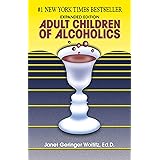An often underestimated aspect of behavioral health, compulsive sexual behavior affects a significant portion of the population, with estimates suggesting that between 3-6% of adults may experience symptoms consistent with what is commonly referred to as sex addiction. As highlighted in the accompanying video with Dr. Jon LaPook and Mavis Humes Baird, the journey from healthy sexual expression to problematic patterns is often subtle yet profoundly impactful. This article aims to elaborate on the nuanced understanding of sex addiction, delving into its defining characteristics, underlying risk factors, diagnostic approaches, and comprehensive treatment modalities.
Understanding Sex Addiction: A Progressive Compulsion
The term sex addiction, or compulsive sexual behavior disorder, describes a pattern where sexual activities become central to an individual’s life, overriding other interests and responsibilities. As Ms. Humes Baird points out, it is a progressive condition. This means that over time, the intensity and frequency of sexual behaviors tend to escalate. What once provided a thrill may no longer suffice, compelling the individual to seek more extreme or diverse forms of stimulation.
A key aspect of this progression is the development of tolerance. Much like substance addiction, a person with sex addiction often requires more and more of the behavior to achieve the same level of satisfaction or emotional relief. However, this escalating need invariably leads to negative consequences. These consequences can manifest across various life domains, including relationships, finances, employment, and even legal standing. It is when these detrimental effects become persistent, yet the individual feels unable to cease the behaviors, that the clinical definition of sex addiction begins to crystallize.
The Illusion of Control vs. Reality
A central tenet of any addiction is the pervasive illusion of control. Individuals experiencing compulsive sexual behavior frequently rationalize their actions, believing that they can stop at any time. Nevertheless, as Ms. Humes Baird articulates, this perceived control diminishes in direct proportion to the addiction’s advancement. The dissonance between self-perception and actual behavior becomes stark, often requiring a significant life crisis to shatter this denial. Such crises might include the discovery of infidelity, severe financial strain, job loss, or legal repercussions. At these junctures, the profound loss of control is often recognized.
Identifying Risk Factors for Sex Addiction
While the exact etiology of sex addiction is multifaceted, certain risk factors are consistently identified. A history of trauma, particularly childhood abuse—be it physical, emotional, or sexual—is frequently implicated. These early adverse experiences can profoundly impact an individual’s emotional regulation and attachment styles, potentially leading to maladaptive coping mechanisms later in life. In such cases, sexual behavior may be utilized to numb emotional pain, assert control, or seek validation not received during formative years.
Furthermore, a predisposition to other addictive behaviors is a significant risk factor. Individuals with a history of alcohol, drug, or gambling addiction are known to be at an elevated risk for developing sex addiction. This suggests common underlying neurobiological pathways or psychological vulnerabilities that make certain individuals susceptible to various forms of compulsive behaviors. Co-occurring mental health disorders, such as depression, anxiety, or bipolar disorder, can also exacerbate these tendencies, as sexual acts may be employed as a temporary escape from emotional distress.
Diagnosing Compulsive Sexual Behavior Disorder
The diagnostic process for sex addiction, or compulsive sexual behavior disorder (CSBD) as recognized by the World Health Organization’s ICD-11, typically involves a comprehensive evaluation. As Dr. LaPook and Ms. Humes Baird discuss, this often begins with a screening instrument designed to assess the frequency, duration, and impact of sexual behaviors on an individual’s life. These tools, such as the Sexual Addiction Screening Test (SAST) or the Compulsive Sexual Behavior Inventory (CSBI), are critical in gathering objective data.
Beyond screening tools, a thorough clinical interview by a trained professional is essential. This interview delves into the individual’s sexual history, current behavioral patterns, emotional states associated with these behaviors, and the extent of negative consequences experienced. It is imperative that the assessment differentiates compulsive sexual behavior from high libido or consensual, healthy sexual exploration. The key distinction lies in the distress caused by the behavior and the inability to control it despite adverse outcomes.
The Path to Recovery from Sex Addiction
Recovery from sex addiction is a challenging but entirely achievable endeavor, as attested by the “thousands of recovering sex addicts” mentioned in the video. The foundation of successful treatment, as emphasized by Ms. Humes Baird, is radical honesty. This “gut-level honesty” must extend to oneself, a trained clinician, support groups, and, eventually, family members. Without acknowledging the full scope of the problem, effective therapeutic intervention cannot commence.
Comprehensive Treatment Approaches
Treatment for sex addiction typically involves a multi-faceted approach. Individual psychotherapy, often utilizing modalities such as Cognitive Behavioral Therapy (CBT) or Dialectical Behavior Therapy (DBT), helps individuals identify triggers, challenge distorted thoughts, and develop healthier coping mechanisms. Trauma-informed therapies like Eye Movement Desensitization and Reprocessing (EMDR) are frequently integrated, particularly when childhood abuse or chronic trauma has been identified as a contributing factor.
Concurrently, participation in 12-step programs, such as Sex Addicts Anonymous (SAA) or Sex and Love Addicts Anonymous (SLAA), is highly recommended. These programs provide invaluable peer support, allowing individuals to connect with others who share similar struggles and learn from their experiences in recovery. While professional care can be expensive, 12-step programs offer a cost-effective, accessible adjunct that fosters community and shared wisdom. The combination of individual therapy and group support is often found to be the most robust pathway to sustained recovery.
Re-establishing Healthy Sexual Behaviors and Relapse Prevention
A crucial phase of treatment involves collaboratively establishing what constitute “safe sexual behaviors.” This process, guided by the treatment team, moves gradually from the simplest, most secure forms of intimacy towards a healthy, fulfilling sexuality. The goal is not merely abstinence from problematic behaviors, but the cultivation of genuine connection, respect, and emotional intimacy in relationships.
Despite significant progress, addiction is also a disease characterized by the risk of relapse. Therefore, comprehensive relapse prevention strategies are integrated into treatment. These strategies typically involve identifying high-risk situations, developing coping plans, strengthening support networks, and fostering self-awareness to recognize early warning signs. It is understood that while relapse can be a disheartening part of the recovery journey for some, it is not an indication of failure but rather a signal to reassess and reinforce recovery efforts. With proper treatment and ongoing commitment, however, many individuals successfully navigate these challenges and establish long-term sobriety in their sexual lives.











